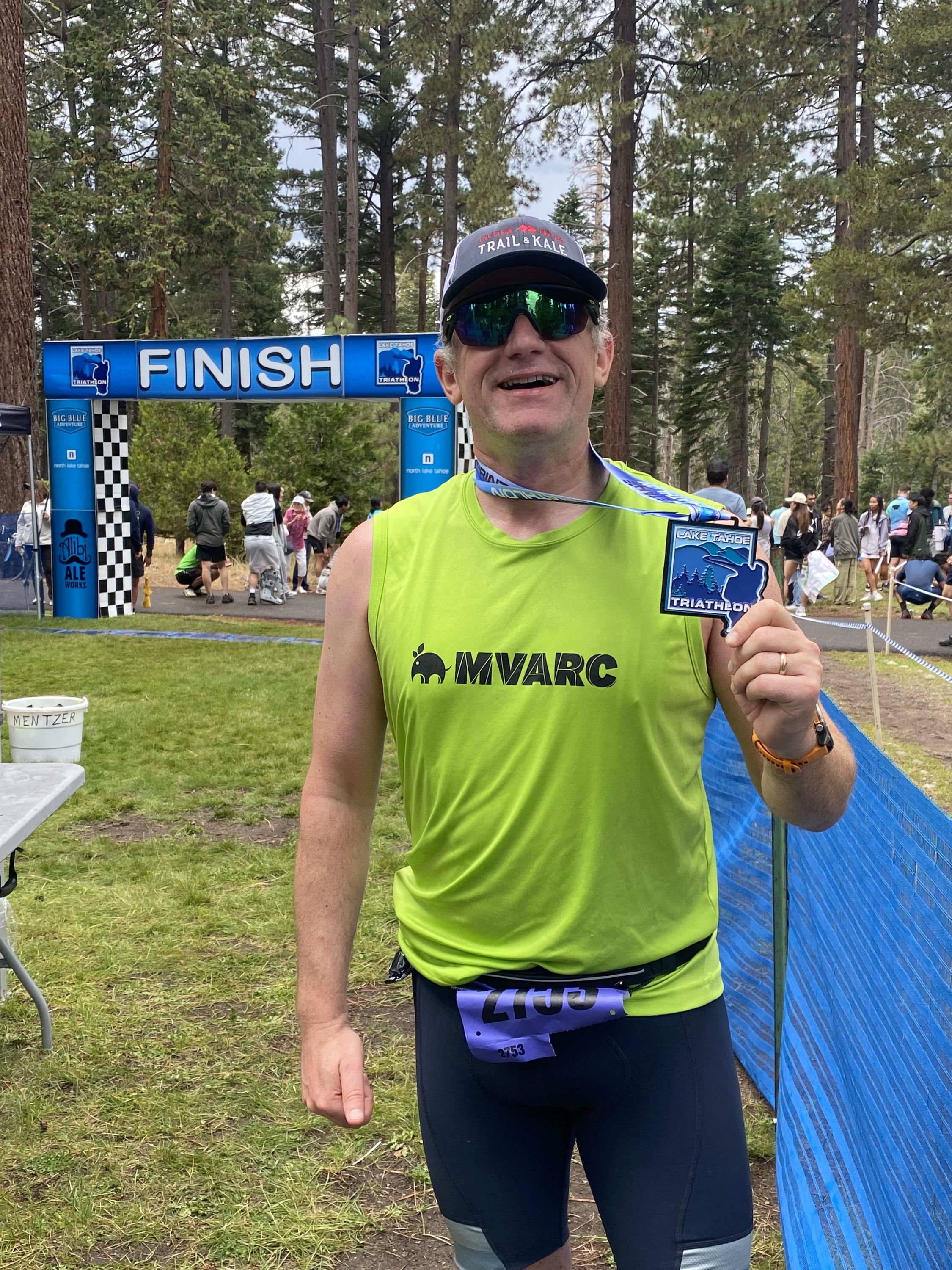Why Are Fitness Apps Still so Hard to Work With?
Fitness apps are supposed to make training easier. Smarter. More seamless. But sometimes, it feels like they’re just one crash away from sending you back to pen and paper.
Take last week. I had a training run planned through my Garmin’s coaching system. I was ready, laced up, warmed up—and then the watch crashed. Not once. Every time. The plan wouldn’t load, and there was no fallback. So I ran anyway and logged it outside of the coaching plan, thinking: no big deal.
Turns out, it was a big deal.
Because the training plan uses internal IDs to track each workout, my independent run was invisible to it. There was no way to manually mark the run as completed in the system, no way to tell the plan “Hey, I did it!” unless the run had the magic metadata baked in from the beginning. I even tried hacking the .fit file—yes, actually opening it with vi and trying to copy-paste the right string. Total black box. Nothing worked.
And this wasn’t some obscure app. This was from one of the biggest fitness platforms on the planet.
It’s wild that in 2025, connecting the dots between I did the thing and the app knows I did the thing still requires a perfect handshake of proprietary formats, cloud syncs, and opaque IDs. These apps track VO₂ max, lactate thresholds, and heat adaptation… but give them a simple edge case like “I ran, but not your way,” and they throw up their hands.
For all the tech in fitness, there’s still a shocking lack of interoperability, transparency, and plain old graceful fallback.
Sometimes the hardest workout isn’t the run itself—it’s getting credit for it.
September 4, 2025
It’s Grifter Time!
Somehow, I made it onto a few “interesting” email lists. They tend to be Pro-Trump (although they aren’t necessarily Trump-approved or -affiliated). The other thing they have all in common is that they promise you fortune and a secret passage to the cave of gold.
Here’s a sampling of the email headlines from the past week alone:
The Hidden $20 Stock Billionaires & Congress Are Buying
WARNING: Do you have money in these banks?!
Trump’s Stunning Executive Order Could Boost This Coin
Donald Trump Jr. Urges Patriots: Secure Tax-Free Income Now
What Elon Whispered to Trump After the Robot
Trump just signed it! Will you collect yours?
The Secret Tax Loophole Most Americans Don’t Know About - Legally reduce your taxes with this patriot strategy
Did Trump and Buffett Just Paint This Map Together?
Did you know there’s an IRS loophole—408(m)—that lets you pull monthly or weekly income from your 401(k), IRA, TSP or 403(b) completely tax-free?
Trump’s Rebate Stimulus Just Dropped — Are You Ready?
I fear for those who have been part of the cult and are drinking the cool-aid. This ain’t a zero sum gain and only a select few will reap fortune.
Luckily, I still get some fun emails as well.
We just dropped a new brew.
August 25, 2025

The Redefector
Cue some mid 80s music: Kate Bush or the Eurythmics. Or if you ware moving closer to Berlin Wall and the Soviet Block, pick Modern Talking. It is 1985, the year of the spy. KGB spy colonel Vitaly Yurchenko walks into the US embassy in Rome and defects to the United States. And, no spoiler alert here as it is in the title of the podcast, Vitaly then redefects to the Soviet Union.

Julie Cohn tells this story in a 10-part podcast that would make 80s spy novelist Frederick Forsyth proud. It is riveting and perfect for a roadtrip. I consumed it all in my drive to Tahoe this weekend.
🎧 Listen here
August 24, 2025
podcasts
Lake Tahoe 2025 Olympic Triathlon
At the beginning of 2025, I set three physical goals. Today, I achieved number 2: complete an olympic distance triathlon.
I looked at several triathlons, but few fit my schedule and training schedule for the second half of 2025, except The Lake Tahoe Tri. Sure it was at altitude. Sure, the cycling route included over 2500 ft of climbing. But you swim in Lake Tahoe! And you run in the woods of Sugar Pine Point Beach. And the views, oh the views! Emerald Bay. Cascade Lake. Lake Tahoe.
We encountered this morning a calm lake and a light cooling drizzle for the entire event. I didn’t mind it a bit. I had a blast! Now a week of recovery ha!

August 24, 2025

Four Oh One Kay, What Could Go Wrong?
Let’s not kid ourselves: we’ve seen this kind of “financial innovation” before. Allowing 401(k)s to dive into private equity and crypto isn’t just a little adventurous - it’s like handing the keys of a trillion-dollar treasure chest to the cowboys of the investment world. And we know how that movie ends: “mess around and find out” is not exactly a solid retirement strategy.
What’s really going on here? It’s less about empowering everyday savers and more about giving certain investment firms a golden ticket to those massive 401(k) coffers. We’re basically opening the door for more risk and complexity when what most people need is stability. We sure are laying the groundwork for a future financial crisis, all in the name of chasing trendy but shaky investments.
🎧 Listen here
August 21, 2025
podcasts

From $4/Hour to $4b: Hayes Barnard’s Playbook
Hayes Barnard’s path from minimum wage to multi-billionaire is all about resilience. Yes, it’s a compelling rags-to-riches story. But it’s also another graduate from Larry Ellison’s school of hard knocks. I see the same pattern: a future successful business person sharpened by their time in Oracle’s sales trenches. Love it or hate it, Oracle remains one of the best schools for founders who know how to win.
🎧 Listen here
August 17, 2025
podcasts

America’s Greatest Risk? Forgetting What Made It Great In The Fifth Risk, Michael Lewis peels back the curtain on how the Trump I administration sidelined the very federal agencies tasked with keeping the country safe, smart, and functional.
Fast forward to Garrett M. Graff’s NYT op-ed, and it’s clear: the unraveling isn’t over.
The Manhattan Project’s true legacy wasn’t the bomb — it was a model for government-powered innovation. Think Oak Ridge, DARPA, NIH, and the NSF. That engine powered America’s golden age of science and tech.
Now? That engine’s being stripped for parts. Research funding gutted. Scientific talent turned away. A war on universities, labs, and even facts themselves. China’s building the future, while America’s shredding the blueprint.
Lewis warned that the real danger isn’t chaos — it’s ignorance in charge of complexity. What we’re seeing now isn’t just shortsighted. It’s the fifth risk made real.
August 15, 2025
reading
Tour De France 2025
No crescendo to a climax finish this year. Instead, Tour de France 2025 provided non-stop fireworks all three weeks long. Every day I tuned in live for the final 30-40 miles and watched at night Belgian’s Vive le Velo TV show for the daily summary and race analysis.

Here are my highlights:
- Obviously 2025 is the (re-)crowning of King Tadej who dominates every type of race. Jonas and his yellow Bumblebees tried. In the words of Fitte Peeters: “He was just too strong”. Tadej came with a strong team, including superman Tim Wellens.
- Team Alpecin-Deceuninck defines joy and team spirit, even though they lost their lead Jasper Philipsen in a crash. This team works hard for each other and had success doing it.
- The joy of the Time Trial victory and the tragedy of Remco dropping out. I was rooting for Remco to take spot 2. (Let’s be honest, spot 1 was never in question.)
- The never ending attacks of Quinn Simmons. Pure rock ’n roll!
- The vlogs of Victor Campenaerts and Matteo Jorgenson. Matteo served us knowledge tidbits daily on the vlog of Victor in the bus of Visma-Lease-a-bike. Victor was very strong this tour!
- The battles on the Mt. Ventoux, both for stage win and for the GC, was pure magic. The best day to watch … until …
- Wout’s attack on Mont Marte in Paris. All of Belgium and beyond shouted it out when Wout dropped Tadej on the cobblestones. It was magic: Paris, troves of spectators along the route, and a battle mano-a-mano. Wout, pure sang!
August 7, 2025
cycling

Robots can dance now. But don’t be fooled—they’re still just really expensive puppets.
Brad Porter dives into the illusion of progress in robotics in this Medium piece, unpacking the hype vs. the reality of what our metal friends can actually do.
The gist? Most robots aren’t making decisions. They’re either being driven remotely (teleoperation), copying human movements they memorized (imitation learning), or following scripts with a camera yelling “YOU’RE OFF TRACK!”
What looks like autonomy is often just very clever choreography. Think Broadway, not brains.
But here’s the kicker—and Porter’s big bet: the future isn’t more of these stochastic puppets. It’s robots that learn to play like humans. Not just around us, but with us. Collaborative, adaptive, and genuinely interactive. Think less “button-pressing marionette” and more “teammate with torque sensors.”
AI might be coming for our jobs, but for now, your local barista bot is just playing back yesterday’s latte dance—until it learns to riff off your espresso mood in real time.
August 5, 2025
reading

How To Lose Time and Money (And What Not To Do)
Ever dream of selling your startup, swimming through a Scrooge‑McDuck pool of cash and then… promptly blowing it all on champagne and speedboats? Me neither. Turns out that’s not even how fortunes disappear. In his 2010 essay “How to Lose Time and Money”, YC co‑founder Paul Graham admits that he only started studying how to stay rich after he became rich, and what he learned is almost insultingly simple: most wealth evaporates not through extravagant shopping sprees but through bad investments. You’re not buying a yacht, you’re “diversifying”—only, your portfolio ends up looking like a Las Vegas blackjack table.
Here’s where the essay feels like it was ghost‑written by your time‑tracking app. Graham notes that the same sneaky traps exist for your hours. The biggest way to waste a day isn’t binge‑watching The Bear; it’s performing “fake work” that feels productive—answering endless emails, fiddling with spreadsheets and attending meetings about meetings. These tasks mimic real effort so well that your internal guilt alarms stay snoozed. You’d feel gross spending a day watching TV, but you might end a day of inbox‑triaging with nothing tangible accomplished.
The fix? Develop new alarms. Question whether that “investment opportunity” or that seventh Zoom call is really adding value, or just pretending to. Recognise that true productivity often looks less like busyness and more like going deep on a problem, building something, or even reading something that sparks an idea. Just as you’d research before buying into a risky stock, vet your to‑do list to avoid tasks that only look virtuous.
So next time you’re tempted by a shiny SaaS investment or an afternoon of Slack pings, remember: the real villain isn’t decadence—it’s disguised diligence. In the words of PG, the “most dangerous way to lose time is not to spend it having fun, but to spend it doing fake work”. Your wallet and your calendar will thank you.
July 27, 2025
reading




